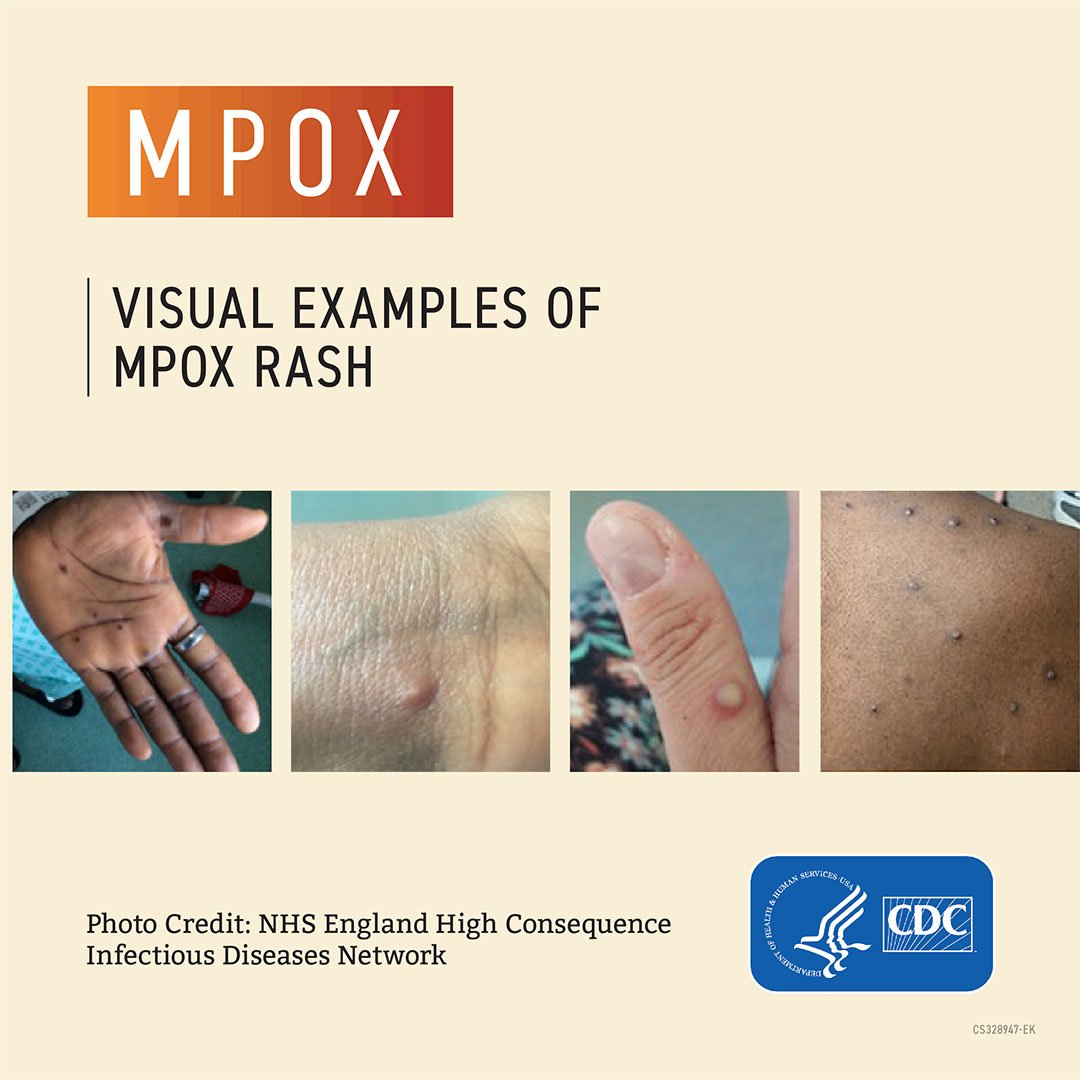
Health Services
What is Mpox?
Mpox is a rare disease caused by the mpox virus. Mpox is part of the same family of viruses that causes smallpox. Mpox symptoms are similar to smallpox symptoms, but milder, and mpox is rarely fatal. Mpox is not related to chickenpox.
The CDC is closely tracking cases of mpox recently detected in the United States. At this time, the risk of mpox in the United States is believed to be low.
Anyone can get mpox. Mpox does not spread easily between people; however, people with mpox in the current outbreak generally report having close, sustained physical contact with other people who have mpox.
What are the symptoms of Mpox?
- Most people with mpox will get a rash which may look like pimples or blisters and may be painful or itchy. The rash may be located on or near the genitals or anus but could also be on other areas like the hands, feet, chest, or face. The rash will go through several stages, including scabs, before healing.
- Some people will also develop flu-like symptoms. The flu-like symptoms may include fever, headache, muscle aches and backache, sore throat, cough, swollen lymph nodes, chills, or exhaustion. If someone has flu-like symptoms, they will usually develop a rash 1-4 days later.
Mpox symptoms usually start within 3 weeks of exposure to the virus. - Mpox can be spread from the time symptoms start until the rash has healed, all scabs have fallen off, and a fresh layer of skin has formed. This can take several weeks.
How is mpox spread?
Mpox can spread to anyone through close, personal, often skin-to-skin contact including:
Direct contact with mpox rash, scabs, or body fluids from a person with mpox. The CDC believes this is currently the most common way that mpox is spreading in the U.S.
Touching objects, fabrics (clothing, bedding, or towels), that have been used by someone with mpox.
Contact with respiratory secretions during prolonged, face-to-face contact, or during intimate physical contact, such as kissing, cuddling, or sex.
Mpox is NOT spread through:
- Casual conversations
- Walking by someone with mpox, like in a grocery store
- Touching items like doorknobs
What steps can I take to prevent getting mpox?
- Avoid close, skin-to-skin contact with people who have a rash that looks like mpox.
- Do not touch the rash or scabs of a person with mpox.
- Do not kiss, hug, cuddle, or have sex with someone with mpox.
- Do not share eating utensils or cups with a person with mpox.
- Do not handle or touch bedding, towels, or clothing of a person with mpox.
- Wash your hands often with soap and water or use an alcohol-based hand sanitizer.
What should a person do if they have a new or unexplained rash or other symptoms?
- Always stay home if you're sick.Cover any blisters or skin lesions.
- Isolate from others and wear a mask if you have to be around others.
- Talk to your healthcare provider, or contact Student Health Services at (509) 963-1881, to schedule an appointment, even if you don’t think you had contact with someone who has mpox.
What does mpox look like?

Where can I learn more?
For more information and current updates on the mpox outbreak, please visit the CDC website
CWU News

Online Master’s of Education program now offers special education endorsement
May 15, 2024
by Rune Torgersen

Lenny Price brings Detroit perspective to CWU Jazz
May 15, 2024
by University Relations